Cloud coloring pages offer a wonderful way to engage with the beauty and mystique of the sky. With each stroke of color, you can create your own unique interpretations of the heavens, exploring different hues, shading techniques, and even adding imaginative elements to make your cloud-filled world truly one-of-a-kind. Plus, you can learn about all the different types of clouds as you color these sheets.
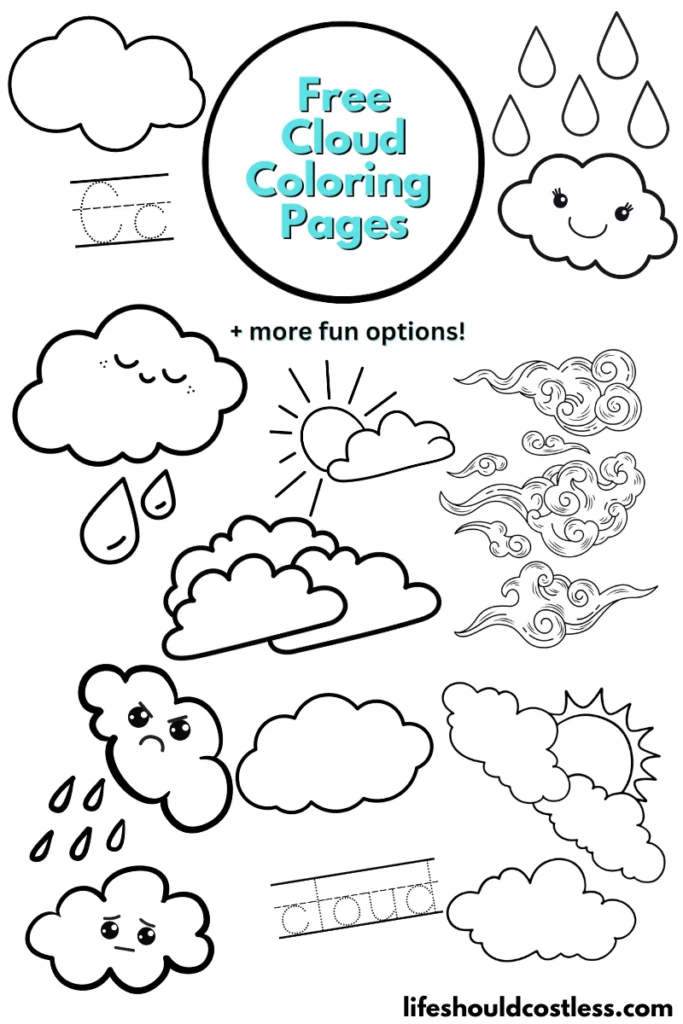
Just pick whichever design that most appeals to you, save the downloadable free PDF template, print it out, and get coloring to your little hearts content.
Or you could even use them as an embroidery pattern or inspiration for a fine line tattoo.
Cloud facts
If you’re new to my coloring pages, you should know that I like to give you the option of learning about the subject so that you can easily turn it into an educational lesson while you are at it…so here we go!
Here are some fun and interesting, simplified, facts about clouds, (here is a link to my reference source):
- Cloud Formation: Clouds are formed when water vapor in the air condenses into visible water droplets or ice crystals. This occurs when warm air rises and cools, causing the moisture to transform into cloud formations.
- Cloud Classification: Clouds are classified into four main types based on their appearance and altitude: cumulus clouds (fluffy and puffy), stratus clouds (layered and uniform), cirrus clouds (thin and wispy), and nimbus clouds (dark and stormy).
- Cloud Colors: Clouds appear white because they scatter sunlight in all directions. However, at sunrise or sunset, they can reflect the red and orange hues of the sun, as well as purples and pinks creating stunning displays of vibrant colors.
- Cloud Heights: Clouds can form at different altitudes in the atmosphere, ranging from low-level clouds near the Earth’s surface to high-level clouds at great heights. Each altitude range is associated with specific cloud types, such as low-level stratus clouds or high-level cirrus clouds.
- Cloud Shapes: Clouds come in a variety of shapes, from the fluffy cauliflower-like appearance of cumulus clouds to the smooth and layered look of stratus clouds. Some clouds can also take unique shapes due to atmospheric conditions or airflow patterns.
- Cloud Names: Clouds often have descriptive names based on their appearance. For instance, the term “cirro-” refers to high-altitude clouds, “alto-” denotes mid-level clouds, and “nimbo-” indicates rain-bearing clouds.
- Cloud Sizes: Clouds can vary significantly in size. While some clouds are small and localized, others can extend for miles and cover vast areas of the sky.
- Cloud Precipitation: Certain cloud types, such as nimbostratus and cumulonimbus clouds, are associated with precipitation. These clouds can produce rain, snow, hail, or even thunderstorms, depending on the atmospheric conditions.
- Cloud Formation on Other Planets: Clouds are not exclusive to Earth. Other planets and moons in our solar system, such as Mars, Venus, and Saturn’s moon Titan, also have clouds consisting of different compositions, such as carbon dioxide or methane.
- Cloud Appreciation: Cloud-watching is a popular pastime for many people, known as “cloudspotting.” It allows individuals to appreciate the beauty, diversity, and ever-changing nature of clouds, providing inspiration for artists, poets, and nature enthusiasts alike. Plus, it’s just plain fun sometimes to look at them and try to spot different animal or creature-shaped clouds.
Remember, these facts about clouds provide a starting point for exploration, and there are even more fascinating details to discover about these ephemeral formations in the sky.
If you’d like to continue your education on clouds, here are some other reputable resources to learn about them while coloring:
- https://www.jpl.nasa.gov/edu/learn/project/the-types-of-clouds-and-what-they-mean/
- https://blog.nature.org/2020/09/22/whats-that-cloud-your-guide-to-cloudspotting/
- https://www.almanac.com/cloud-guide-types-clouds-and-weather-they-predict
- To see all of my free printables, go here.
- To see an Alphabetized Index of all my coloring pages, go here.
- To see all of my nature and weather coloring pages, go here.
Coloring tips
Here are some of my best tips and tricks to help you create beautiful and realistic cloud art:
- Layering and Blending: Use a combination of light and dark shades to create depth and dimension in your clouds. Start with a base color, then gradually layer lighter or darker shades to add highlights and shadows. Blend the colors together gently using smooth, circular motions to achieve a soft and seamless look.
- Texture and Stroke Direction: Consider the texture and formation of the clouds you are coloring. For fluffy cumulus clouds, use short, curved strokes to mimic their rounded shapes. For wispy cirrus clouds, use light, feathery strokes in the direction of their elongated appearance. Pay attention to the stroke direction to capture the essence of different cloud types.
- Use Reference Images: Look at photographs or real-life clouds to get a sense of their appearance, shapes, and textures. Study how light interacts with the clouds and try to replicate those effects in your coloring. Observing reference images can provide valuable insights and inspiration for your artwork.
- Play with Colors: While clouds are often associated with white, don’t be afraid to experiment with different colors to add interest and creativity to your artwork. Soft blues, pinks, oranges, and purples can create a magical and dreamy atmosphere. Additionally, consider using subtle gradients or hints of complementary colors to make your clouds visually engaging.
- Add Details: To enhance realism and depth, consider adding subtle details to your clouds. You can incorporate hints of other cloud formations, such as distant cirrus clouds or smaller puffy clouds in the background. Additionally, try adding delicate touches like sunlight peeking through or a hint of rain or snowfall.
- Experiment with Different Tools: Explore various coloring tools to achieve different effects. Colored pencils offer control and precision, allowing you to layer and blend smoothly. Watercolor paints or markers can create soft, flowing effects. Pastels or chalk can provide a dreamy, ethereal texture. Experiment with different mediums to find the one that suits your artistic vision.
- Embrace Creativity: Remember that coloring pages of clouds offers an opportunity for self-expression. Feel free to incorporate your own imaginative elements, such as whimsical characters or fantasy landscapes within the clouds. Let your creativity soar as you bring your unique artistic style to the coloring process.
Most importantly, enjoy the process of coloring and allow yourself to relax and immerse in the meditative nature of this creative activity.
With practice and experimentation, you’ll develop your own techniques and discover new ways to bring the beauty of clouds to life on paper.
Options For Printing:
Letter C is for cloud writing practice worksheets
*My letter C is for cloud coloring sheet printables are specifically designed to be used in a classroom setting, they are the only printable options on this page that do not need written permission to use in a public setting.
Please send the link to this post along if anyone asks you where you got them. Thank you!
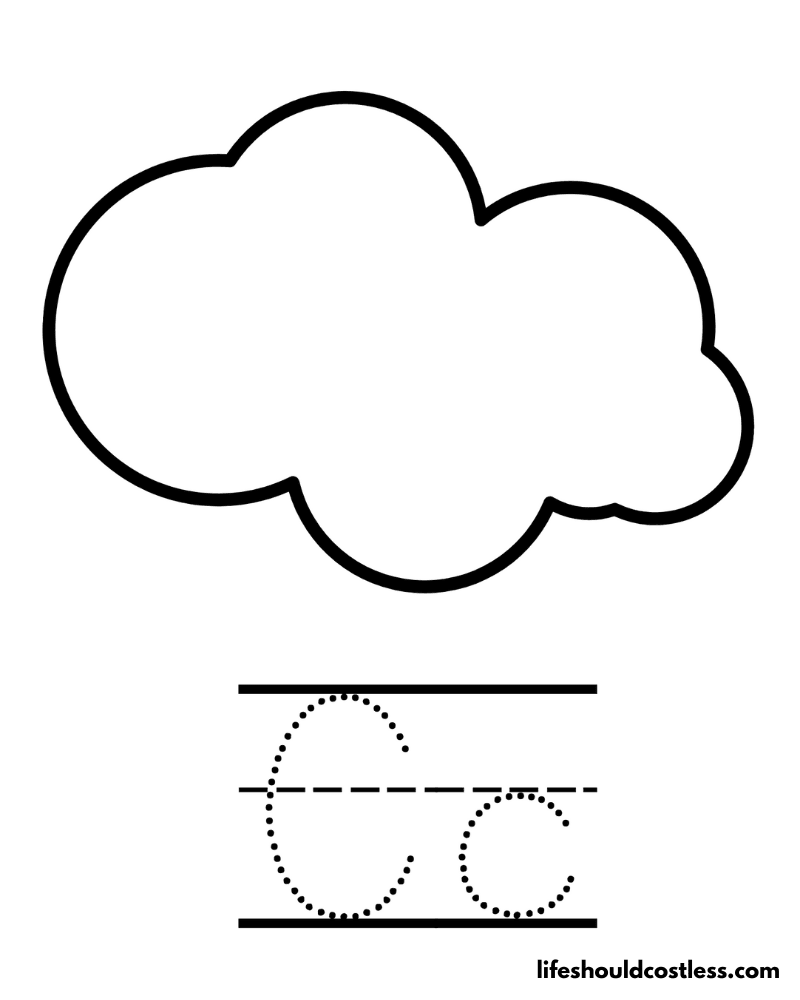
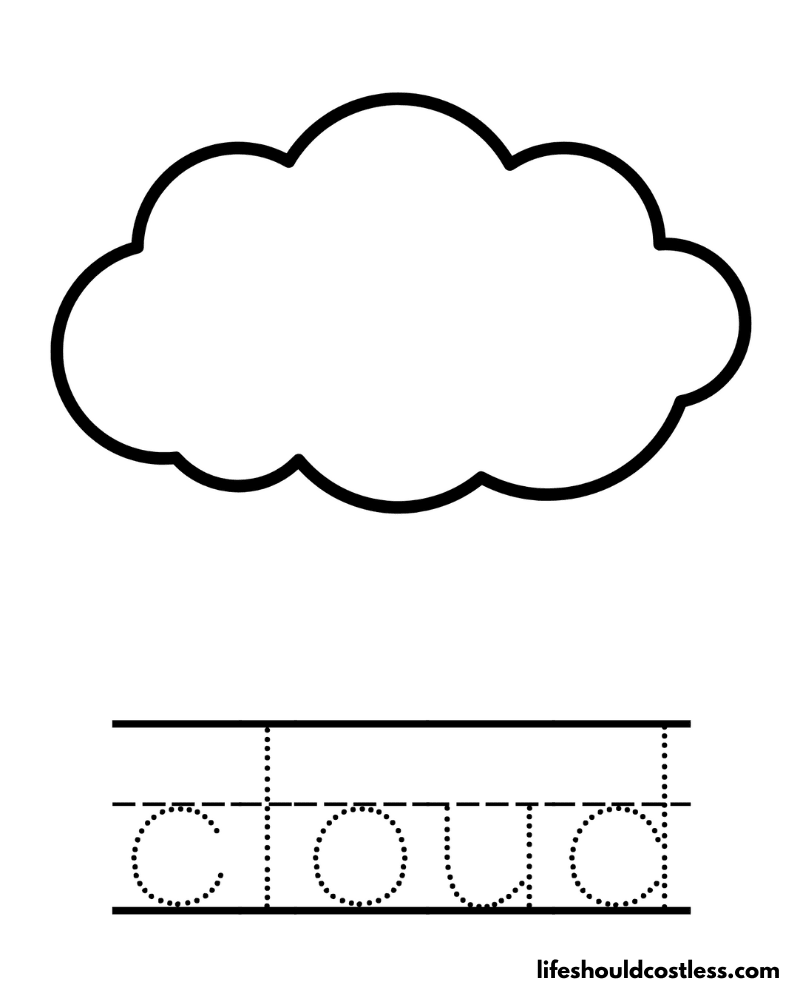
Kawaii Clouds
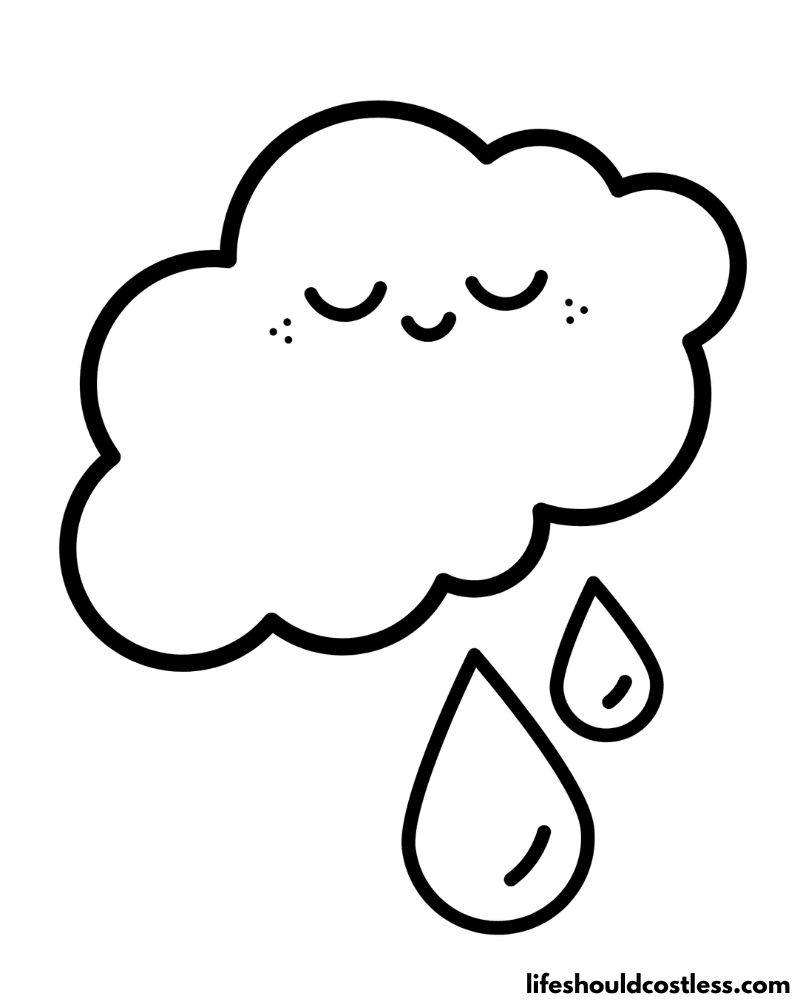
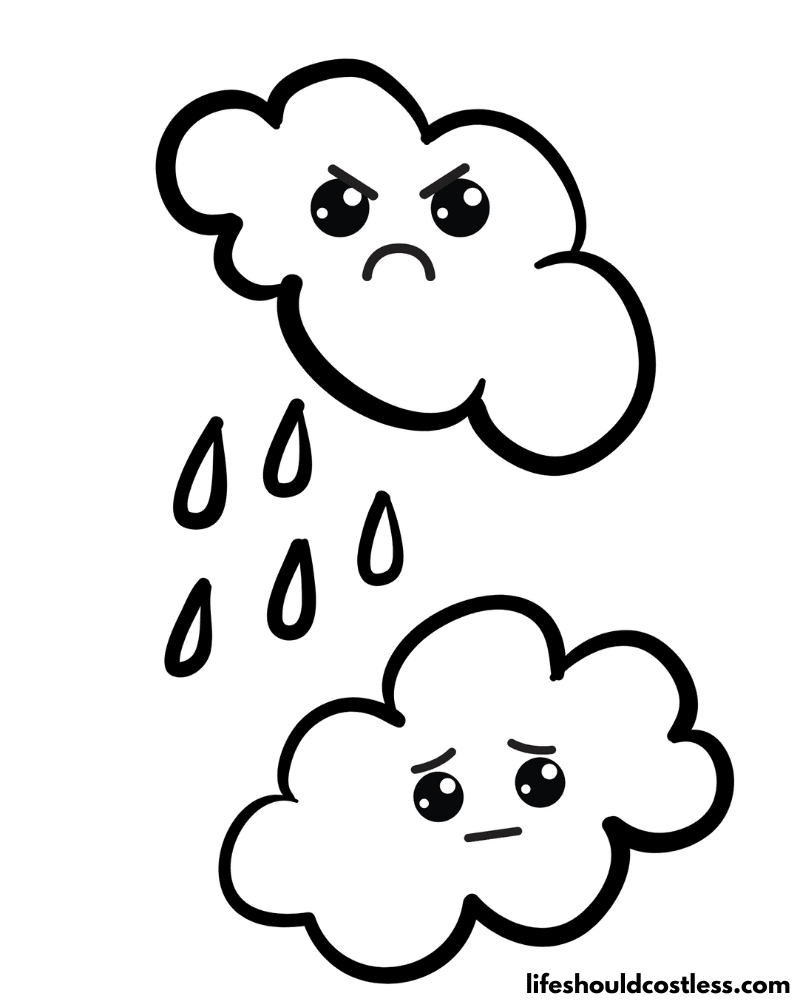
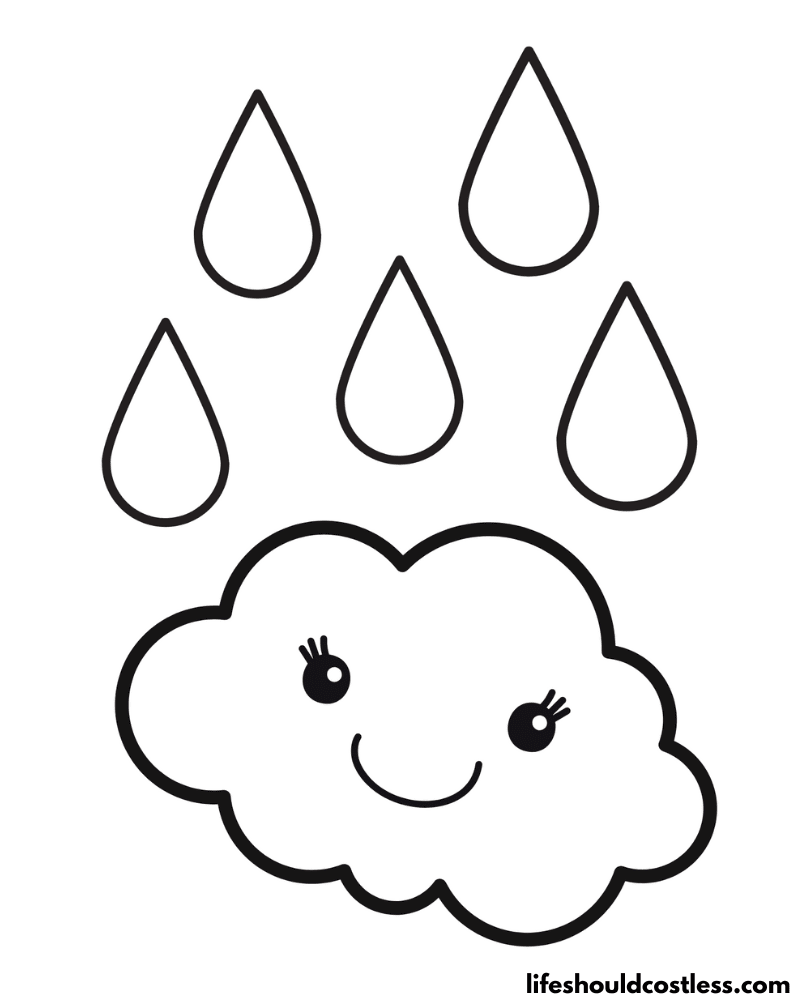
Misc Other Clouds Designs
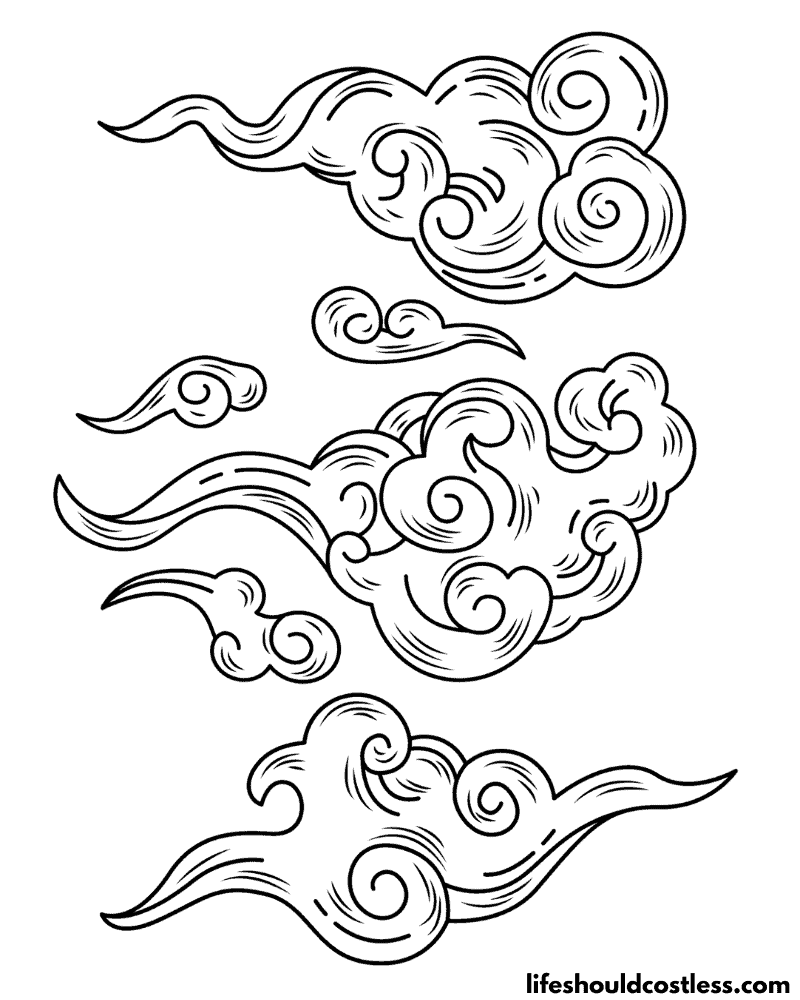
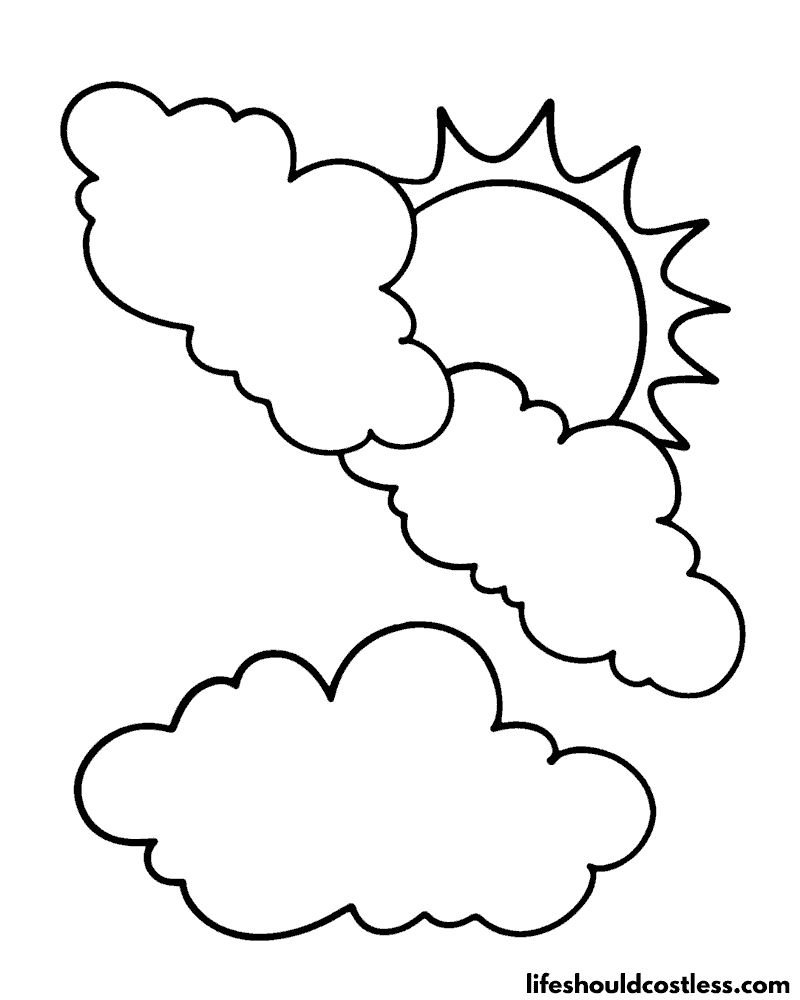
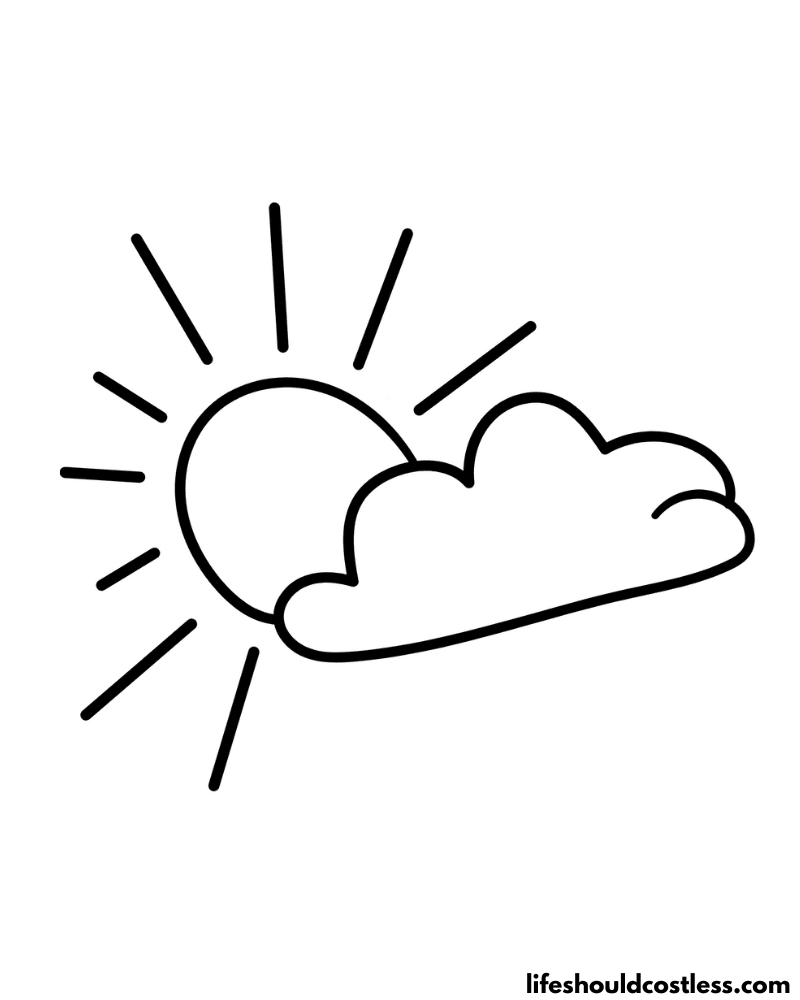
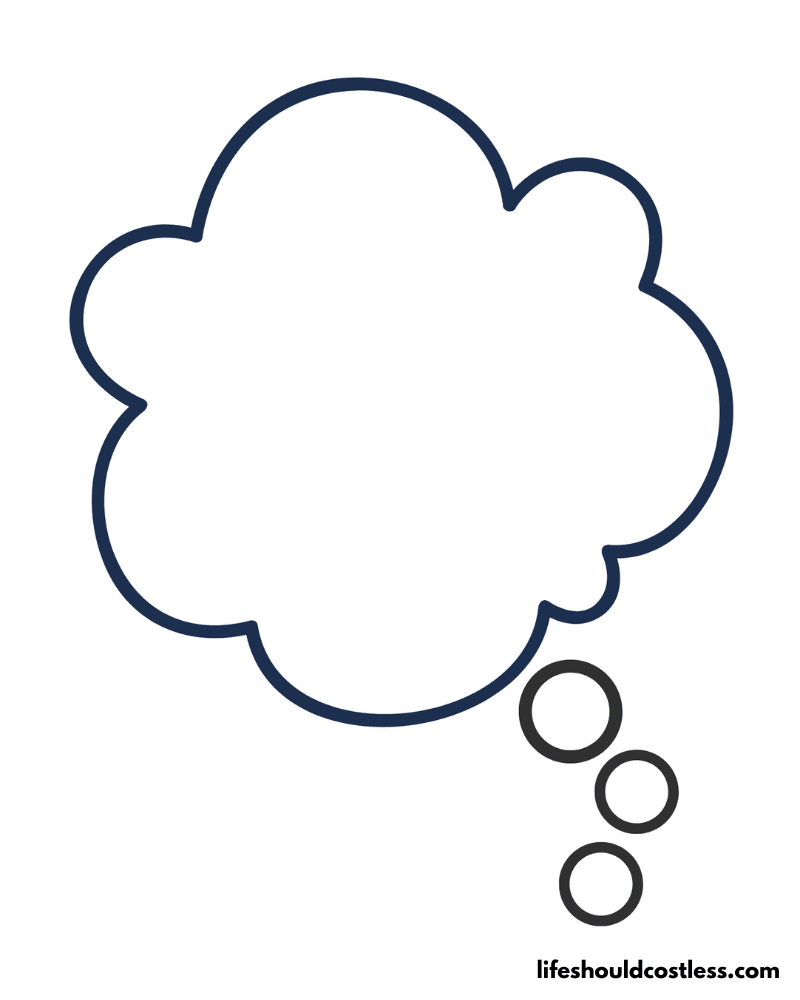
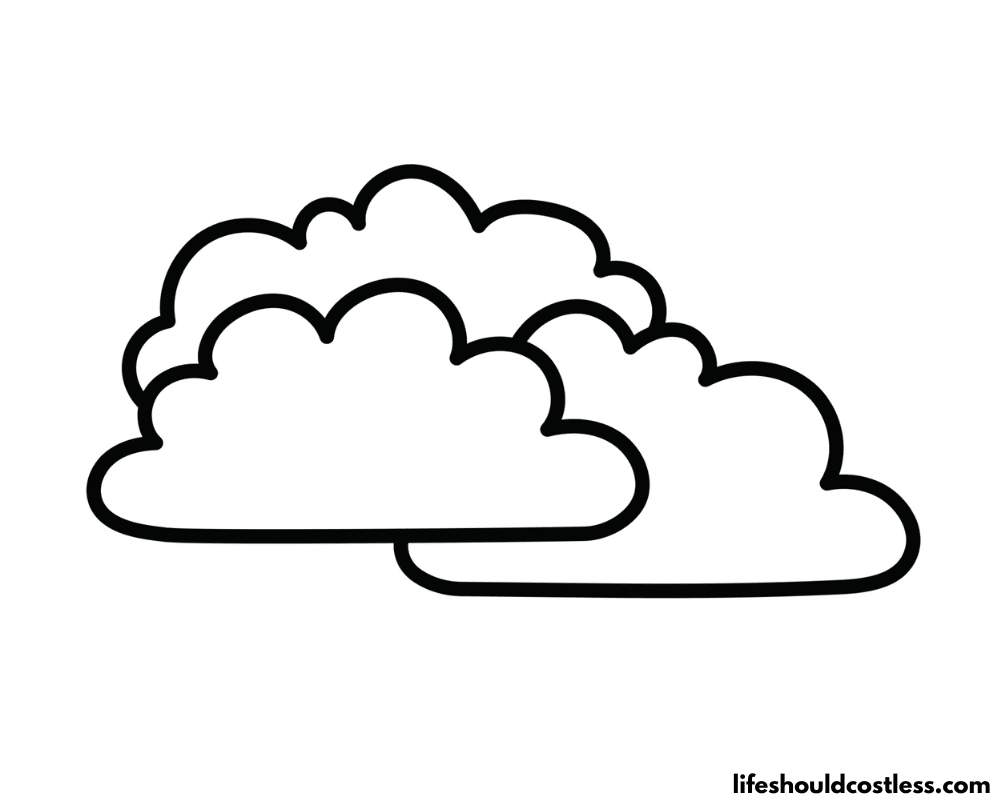
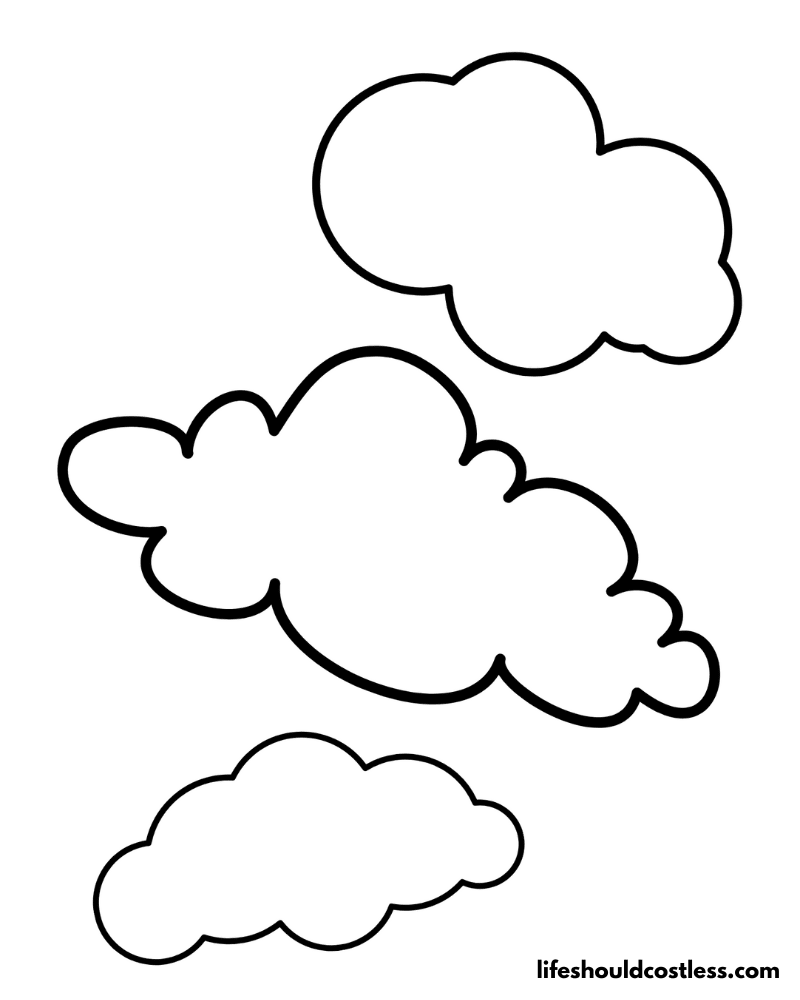
FAQ’s
The actual color of clouds is typically white or a pale shade of gray/grey. When sunlight passes through clouds, the water droplets or ice crystals scatter the light in all directions. This scattering process causes the cloud to appear white as it reflects all wavelengths of visible light equally.
The reason clouds appear white is because they scatter sunlight of all colors, giving them a neutral appearance. When sunlight passes through the atmosphere, it contains a mixture of all colors in the visible spectrum.
As the light interacts with the cloud particles, it scatters in various directions, effectively blending all the colors together and resulting in the perception of white.
However, it’s worth noting that the color of clouds can vary depending on several factors, such as the angle of the sun, the thickness or density of the cloud, and the presence of other atmospheric particles.
During sunrise or sunset, when the sun is lower in the sky, clouds can reflect the warm hues of the sun, appearing pink, orange, or even golden. Similarly, clouds in stormy conditions may appear darker or have a bluish-grey tint due to their thickness and the absorption of sunlight by water droplets within them.
In summary, while the intrinsic color of clouds is white, their appearance can be influenced by various factors, leading to a range of colors observed in different lighting and atmospheric conditions.
Clouds can appear grey due to a few different reasons:
Thickness and Density: Grey clouds often result from thick and dense cloud formations. When clouds become dense, they can block a significant amount of sunlight from passing through them. As a result, less sunlight is scattered and reflected back, causing the cloud to appear darker and greyer.
Rain-Bearing Clouds: Nimbus clouds, which are associated with precipitation, can often appear grey. These clouds are typically thick and filled with water droplets or ice crystals. The increased concentration of water or ice particles within the cloud can scatter and absorb more sunlight, making them appear grey and darker in color.
Shadowing and Lighting Conditions: The presence of other clouds or objects in the atmosphere can cast shadows on clouds, resulting in areas of the cloud appearing darker or greyer. Additionally, the lighting conditions and the angle at which sunlight hits the cloud can influence its perceived color. Clouds can appear greyer when viewed from certain angles or during overcast conditions when the sunlight is diffused and less intense.
It’s important to note that while grey clouds are commonly associated with rain and overcast conditions, cloud colors can vary depending on factors such as the time of day, atmospheric conditions, and the scattering of sunlight.
Clouds can exhibit a range of colors, from brilliant white to various shades of grey, depending on these factors.
*I will add more cloud colour / color questions and answers as the questions get sent to me.
Cloud coloring pages provide a delightful and engaging avenue for artistic expression and exploration.
Through the strokes of our colored pencils, we can bring to life the captivating beauty and ever-changing nature of clouds.
Beyond the joy of coloring, these pages offer an opportunity to deepen our understanding of the science and wonder behind these celestial formations.
As we immerse ourselves in the world of cloud coloring, we unlock our creativity, develop observational skills, and gain a newfound appreciation for the intricate patterns and textures that grace our skies.
So, pick up your coloring tools and let your imagination soar among the clouds, as you embark on a colorful journey of self-expression, relaxation, and discovery.
With every stroke, may you find inspiration and joy, as the sky becomes your canvas and the clouds your muse.
Thanks so much for stopping by my blog and supporting my endeavors to make people’s lives a little easier/better/more affordable.
If you liked this post, or found it helpful in any way, please make sure to share it with your family, friends, and co-workers via social media.
Or you could even send them the direct link via email. Whichever way you choose to spread the love, I super appreciate it! ~Sarah
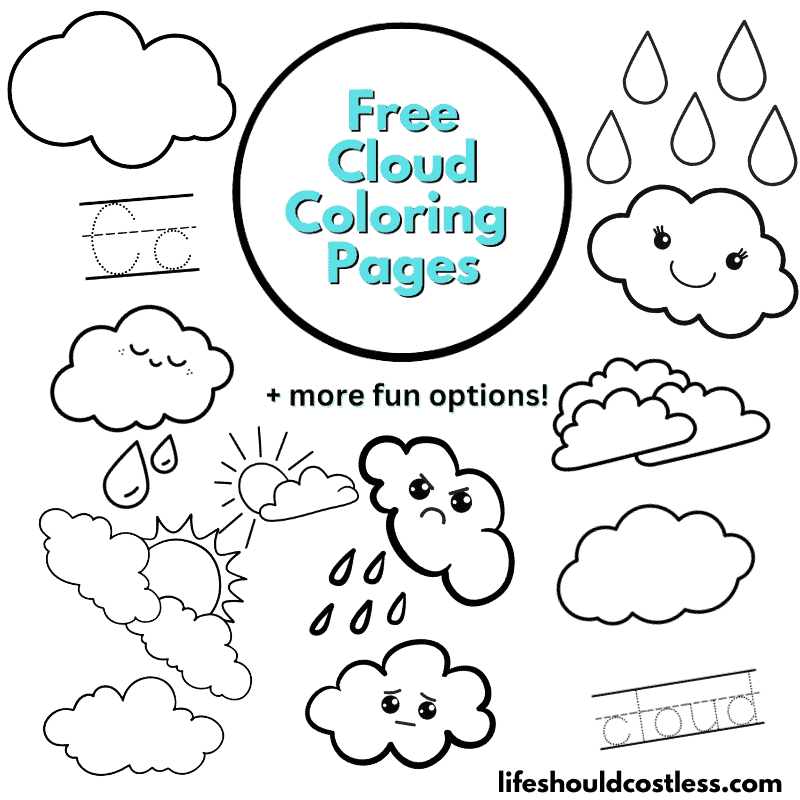
Follow Me
How To Follow & Support This Site
- If you would like to subscribe to my email list, go here.
- Make sure to follow along via social media, by going here.
- If you would like to learn how to really show your support to this site (at no cost to you), go here.
- If you would like to make a direct donation to the site, go here.
Check out my other free printables
- To see all of my free printables, go here.
- To see an Alphabetized Index of all my coloring pages, go here.
- To see all of my nature and weather coloring pages, go here.
Otherwise, here are direct links to several of my other related posts that you’re also going to love:
Nature & Weather
Spring coloring pages
Easter
Summer coloring pages
Fall Coloring Pages
Halloween
Thanksgiving
Winter Coloring Pages
Christmas
New Years
St. Patrick’s Day
Valentine’s Day
Other good resources for a printable cloud
- http://coloringway.com/nature/cloud-coloring-pages.htm
- http://bestcoloringpages.com/cloud-coloring-pages_1p297.html
- https://www.ultracoloringpages.com/p/cloud-coloring-page/4c8c29f638faf00eeaa2784cba490223
*This post was originally shared to this blog on 06/05/2023, and has since been updated to improve user experience, possibly add video instruction, as well as to make it as shareable as possible across the social medias.
**Please note that I do try my hardest to provide factual, but easy to understand, information about each topic. If you notice a discrepancy in my coloring pages, facts, or see something that you deem “misinformation/incorrect” please make sure to notify me about it. I would prefer that you send me an email with a link to a more reputable resource on that subject, so that I can correct it as soon as possible. Thanks so much for helping this site become the best that it can be!
***Resources from djinkers were used in the production of this article.
